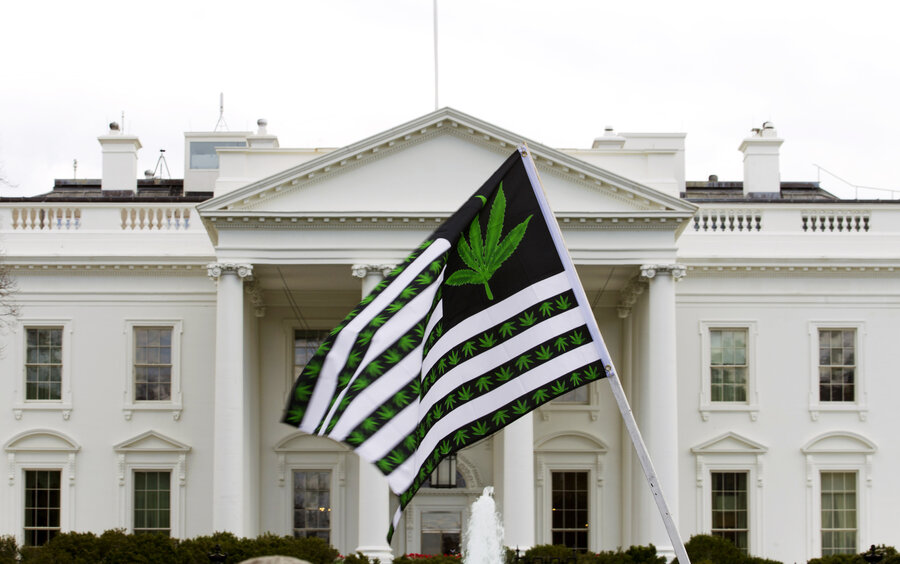Why marijuana advocates were lighting up at the White House
Loading...
Unable to wait for the predesignated 4:20 pm protest, over 100 marijuana legalization activists lit up joints, bowls, and vapors at 4:17 in front of the White House Saturday.
Adam Eidinger, leader of Saturday’s protest, says he does not encourage smoking in public, but that the protestors have had to resort to desperate measures to get the president’s attention. Calling for President Obama to remove marijuana from the list of Schedule I of the Controlled Substances Act, the protestors want recreational marijuana use to be decriminalized at the federal level.
“We won’t be ignored anymore,” Eidinger tells Marijuana Politics. “I’m not the biggest advocate of public use, but for now, this is a tactic that we need because we have been ignored too long. Frankly, we don’t have anything to lose…. All of a sudden Democrats have discovered states’ rights on cannabis laws, but that isn’t good enough, we need legalization across the nation.”
The US Drug Enforcement Agency defines Schedule I drugs as “the most dangerous class of drugs with a high potential for abuse and potentially severe psychological and/or physical dependence.” Along with marijuana, other Schedule I drugs include heroin, LSD, ecstasy, and peyote.
However, none of the protestors were arrested at the rally due to some tricky technicalities. The activists remained on the street (which is owned by the District where pot possession is legalized) and off the sidewalks (which is owned by the federal government, where marijuana possession warrants a fine between $1,000 and $5,000 and incarceration between 15 days and three years).
Two activists were given citations and $25 fines for public consumption, but apparently only after one of them blew smoke in an officer’s face.
But just because no arrests were made does not mean the protest was well-received.
Congressmen and women who have voiced support of legalized marijuana, such as Rep. Dana Rohrabacher (R, Calif.), Rep. Sam Farr (D, Calif), Rep. Steve Cohen (D, Tenn.) and Rep. Earl Blumenauer (D, Oregon), failed to participate in the rally or offer their support.
And the protest has also garnered disapproval from Eidinger’s peers in the legalization movement. “I’m not sure how smoking marijuana in a public park where children and families are vacationing is supposed to encourage the president to do what we want him to do,” Tom Angell, chairman of the group Marijuana Majority, told US News and World Report.
“While there’s certainly a role for civil disobedience in social justice movements,” Angell explains to Marijuana Politics, “you usually protest by committing acts you think should be legal but aren’t. Allowing the smoking of marijuana in public parks would not be good public policy.”
Protestors, carrying a 51-foot inflatable joint Saturday with the phrase “Obama, deschedule cannabis now,” are eager for Obama’s attention because he has the constitutional authority to reclassify marijuana from Schedule I to Schedule IV or V, without any congressional approval.
The protest was inspired by comedian Bill Maher who advocated for a descheduling protest while smoking a joint on his HBO show in February.








